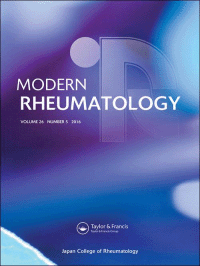-
Views
-
Cite
Cite
Eri Sato, Katsuji Nishimura, Ayako Nakajima, Hiroshi Okamoto, Mikiko Shinozaki, Eisuke Inoue, Atsuo Taniguchi, Shigeki Momohara, Hisashi Yamanaka, Major depressive disorder in patients with rheumatoid arthritis, Modern Rheumatology, Volume 23, Issue 2, 1 March 2013, Pages 237–244, https://doi.org/10.3109/s10165-012-0643-8
Close - Share Icon Share
Abstract
Objective To investigate the point prevalence of major depressive disorder (MDD) as diagnosed by the Mini-International Neuropsychiatric Interview (M.I.N.I) in patients with rheumatoid arthritis (RA) and to determine whether MDD is related to features of RA disease, such as disease activity or physical dysfunction.
Methods Of the patients with RA who participated in the IORRA survey conducted in October 2005, 162 were evaluated using the M.I.N.I., the Center for Epidemiologic Studies-Depression (CES-D) scale, and the two-question depression screen for MDD. RA clinical features were obtained from the concomitant IORRA cohort database. Relationships between MDD and RA disease features were analyzed by the Wilcoxon rank sum test and Pearson’s chi-square test.
Results The point prevalence of MDD as diagnosed by the M.I.N.I. was 6.8 % in our Japanese patients with RA. The percentage of depressive patients was determined to be 23.5, 17.3, or 7.4 % according to the CES-D scale with cut-off points of 16, 19, or 27, respectively, and 14.2 % according to the two-question depression screen. The best cut-off point for CES-D for risk of MDD diagnosed by M.I.N.I. in this study was determined to be 23, with 11.7 % depressive patients having the highest sum of sensitivity and specificity. No relationship between MDD and RA disease activity was detected.
Conclusion By using the well-established structural interview instrument M.I.N.I., we determined the point prevalence of MDD in the RA patients enrolled in this study to be 6.8 %, leading to the conclusion that concomitant MDD does not seem to influence disease activity in RA patients.





